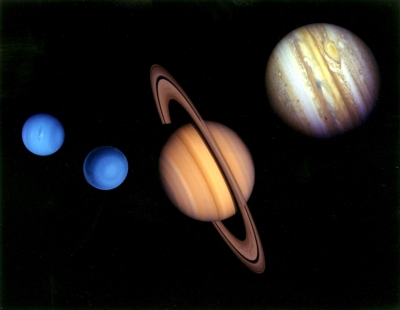
Between them, the two spacecraft have explored all the giant outer planets of our solar system – Jupiter, Saturn, Uranus and Neptune – as well as 49 moons, rings and magnetic fields of the planets.
- Voyager 2 is the first spacecraft to fly by all the four outer planets. It is the only spacecraft to visit Uranus and Neptune. It is the first spacecraft to image the rings of Jupiter, Uranus and Neptune. It discovered Neptune’s Great Dark Spot and its 1,600-km-per-hour wind.
- Voyager 1 found that Jupiter’s Moon 10 has active volcanoes and is the most geologically active place in the Solar System.
- Voyager 1 detected lightning on Jupiter.
- Voyager 1 detected a nitrogen-rich atmosphere on Saturn’s moon Titan, likely having clouds and rain of methane.
- In 1990, Voyager 1 took the first “family portrait” of the Solar System as it looked back toward home before its journey towards interstellar space. The portrait included the iconic image of planet Earth known as the Pale Blue Dot.
- On February 17, 1998, Voyager 1 passed Pioneer 10 to become the most distant human-made object in space.
- Both Voyager 1 and 2 suggested the existence of an ocean on Jupiter’s moon Europa.
- The Voyager spacecraft are the third and fourth human spacecraft to fly beyond all the planets in our solar system, outstripping the gravitational attraction of the Sun. Pioneers 10 and 11 were the first two to do so.
Picture Credit : Google
